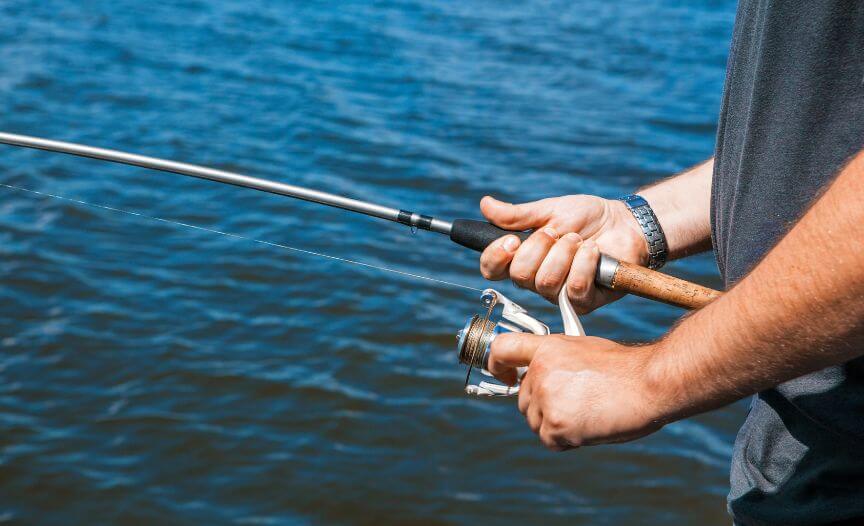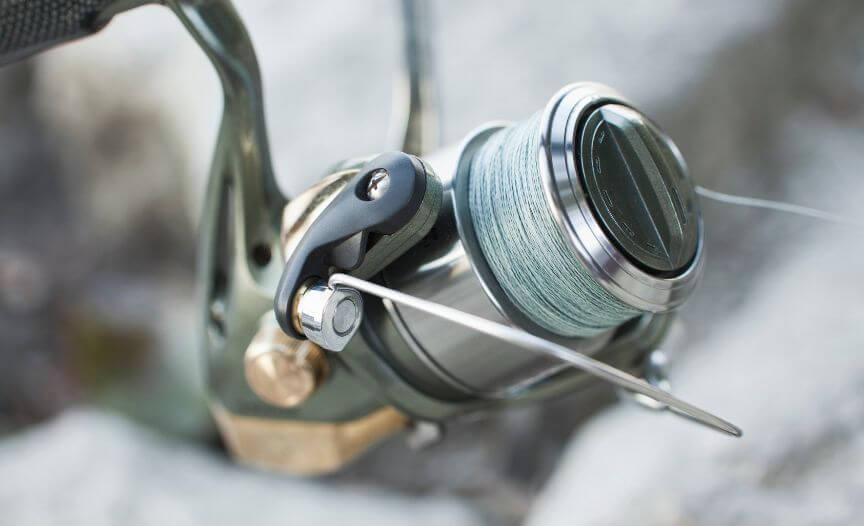One important thing you need to consider when starting a fishing career or habit is knowing the best equipment that works for you. Part of such equipment is the type of fishing reel.
Choosing the appropriate fishing reel will make you consider a lot of factors such as the fishing style, the learning difficulty, and its price. If you are looking for a beginner-friendly fishing reel, then the open face reel might work for you!
Keep reading to know the features of the open face reel, how to correctly use them, its advantages and disadvantages, and some beginner tips to start your fishing endeavor.
Features of an Open Face Reel
An open face reel, commonly referred to as the spinning reel, might be the most popular type of fishing reel. From the word open, the spool is exposed and has locks to keep the line in place.
What makes this fishing reel unique is that it gives the line more storage on the spool. This will allow you to cast in longer distances, and you might find yourself catching something really rare!
Another important feature of this reel is that it provides you with balance while casting. This gives you better control over the rod, making its casting easy.
Now that you have considered the open face fishing reel let us learn and understand how to use and cast this efficiently.
Step-by-Step Way of Casting an Open Face Reel
Step 1: Hold the fishing rod and reel in a way that you are most comfortable with.
You may hold the rod using your index finger and your remaining fingers gripping the reel. Or you might want to try placing both your index and middle fingers in front of the reel while the ring and pinky fingers behind it. It is important to consider your preference and comfort in this step.
Step 2: Barely hold the fishing line using your index finger.
This allows you to sense the bait without sacrificing its accuracy. Make sure that you are not tightly holding it against the rod and not also just touching it.
Step 3: Manually open the bail with your other hand.
The bail (the metal ring) must now face the direction of your fingers holding the rod and reel.
Step 4: Load the rod back as you locate the direction of your casting.
You may hold the butt cap (lower handle) of the rod as you cast it. This will give you more control and precision towards your target. You may cast it overhand or on the side. To launch at a longer distance, use the power of your wrist and elbow, not your shoulders.
Step 5: Let go of the line that your index finger is holding.
Halfway toward the target location, you must let go of the fishing line. The launching (refer to step 4) and letting go must take place simultaneously.
Step 6: Manually close the bail with your other hand.
Just like what you did when opening the bail (refer to step 3), flip it in the opposite direction to close it. Remember always to close the bail as the lure is in the water. You are now ready for retrieval once the bait has been taken.
Advantages of Using an Open Face Reel
1. More flexible
This reel can be used with both artificial and real bait. Therefore, it is efficient to use while practicing and still learning how to fish. They can also be used in various environments such as an open ocean, ice, and pan fishing.
2. Long Fishing Range
It gives the fishing line more storage, allowing it to be cast farther. Not all reels are created equally in terms of their fishing line’s length. Therefore, preferring reels that contain long lines is an advantage.
3. More controlled retrieval
It allows you to take control and exert pulling power during retrieval. This type of fishing reel goes well with smaller baits since it only requires to be pulled by the weight of the line.
Disadvantages of Using an Open Face Reel
1. Prone to twists and tangles
Due to its open feature, the lines might get coiled more easily. Therefore, handling the bail appropriately and launching it with greater force is necessary.
2. Mastering its casting might be difficult
By reason of its vulnerability in line tangles, a lot of practice is required to handle this reel type competently.

Some Beginner Tips to Skillfully Master Open Face Reel
1. Carefully choose the reel size
Reel sizes differ according to what you want to capture. Smaller sizes tend to be used in catching smaller fish and larger sizes for larger prey.
2. Always remember to close the bail!
Even skillful fishermen tend to forget this step. Closing it manually would maintain its quality and extend its longevity.
3. Softly hold the line with your index finger while casting.
Gripping the line will make you lose your certainty in throwing the bait to the place you wanted. Moreover, make sure that you are also not holding it loosely to the point that you cannot properly control the fishing line.
4. Acquire an Anti-Reverse Locking Handle.
This feature will ensure that your reel is stable at all times. This will also avoid the dragging of your catch which is the main cause of them escaping. Be sure to look for this type of feature when choosing this type of reel.
5. Know your strength during dragging.
The line might snap when dragging is executed poorly. To avoid this from happening, ensure that the line was set up correctly (not too tight and not too loose). This will give you a proper fight with your catch during retrieval. Also, know when to apply and maintain pressure as you battle with your catch.
6. It is never wrong to ask the experts!
Delving into your fishing experience goal might be overwhelming because of the countless reminders and rules to follow. However, you can never go wrong with asking the right people with experience in fishing. The steps are to do personal research and then confirm it with the experts.
Comparing Open Face Reel with Closed Face Reel
Closed face reels are also called spin casts. In contrast to open face reels that have visible lines, their spool is hidden. The fishing line is contained inside the reel’s nose cone, allowing it to pass in the nose’s hole. Utilizing this reel is noticeably more straightforward because you just have to press a button to release the fishing line. This feature makes this type of reel less controllable. Moreover, you can adjust the fish’s resistance when you are drawing the line. This is due to the drag adjusting mechanism of spin cast reels.
However, this also has cons despite how easy it is to use. Its closed design tends to trap water and some other debris acquired during fishing. This results in shortening its lifespan and damaging its quality. Additionally, they also have a limited range of casting compared to open face reels. Such features decrease its precision and accuracy in reaching the target location for casting.
Here is a comparison table that summarizes the advantages and disadvantages of open and closed face reels.
| Open Face Reel | Closed Face Reel | |
| Casting | Requires more experience and practice. | Its feature is straightforward and popular with beginners. |
| Range | Its open design gives more capacity to fishing lines. | Shorter fishing lines. |
| Accuracy | Gives you better control at reaching your exact location. | Has limited casting range, leading to lower accuracy. |
| Line Tangles | Are much more prone to get their lines coiled and tangled. | Rarely tangles the fishing lline but may occur knots inside the cone. |
| Versatility | Allows you to catch a variety of fish. | Less versatile due to its shorter fishing line. |
| Quality and Lifespan | Tend to last longer. | Damage is prone because of its closed feature. |
| Price | A bit expensive | Cheaper |
When can you use Open or Closed Face Reels?
Open face reels are beneficial to use in open water because they can cater to a longer casting distance. In addition, it is used appropriately for catching quite heavy fish due to its thick fishing line and more controllable feature.
On the other hand, closed face reels are reliable for calm fishing expeditions. This is enough to use whenever you want to catch smaller fish in an enclosed water system. Typically, this is designed in river fishing to acquire a smoother casting and retrieval battle with your catch.
Conclusion
A variety of reel fishing types are found in the market. Choosing the appropriate reel correlates to the goal you want to accomplish during your fishing experience.
The open face reel is commonly used for its more extended range, accuracy, versatility, and quality. There are also some types of reels like the closed face reel, which is more popular with beginners because of its straightforward features.
In the end, both types serve different purposes. We advise you to choose the best fishing reel depending on your intention―whether you are fishing to develop a hobby or planning to pursue it as a profession.

